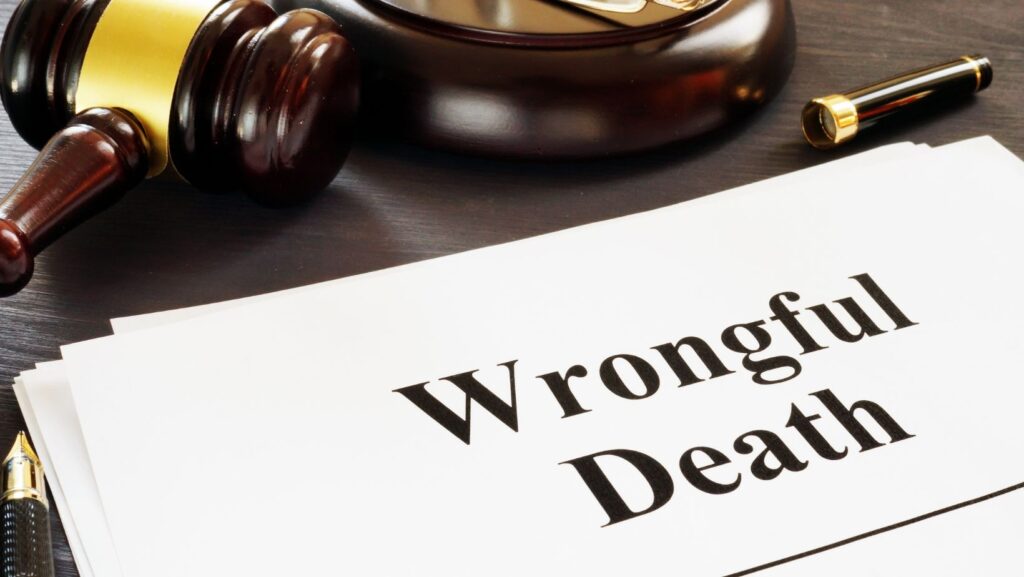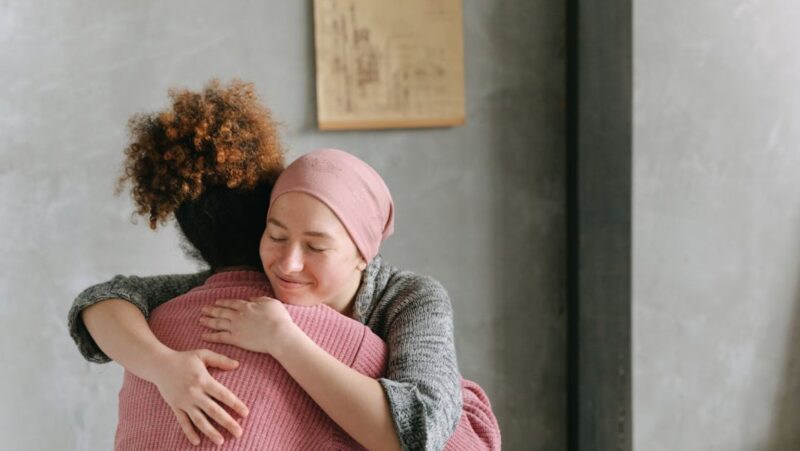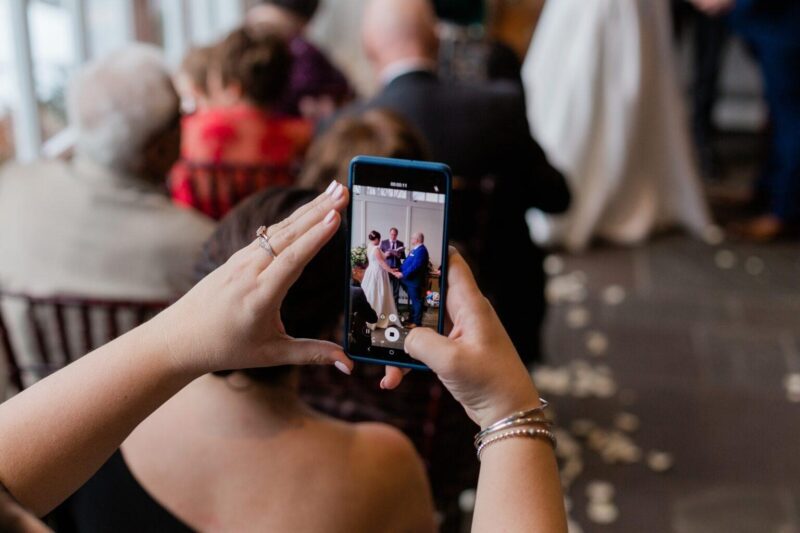
Losing a loved one is incredibly hard. But losing them because someone else acted irresponsibly or intentionally harmed them is even more painful.
When the careless or wrong actions of another person or company lead to injuries that then cause someone’s death, the surviving family members can take legal action. They can file a lawsuit called a “wrongful death claim” against whoever caused their loved one to die.
One type of damages that can be awarded in a wrongful death case is called loss of consortium damages. These refer to losing the love, care, guidance, company, cooperation, intimacy and affection given by the deceased family member.
Basically, all the emotional and “intangible” things that can’t be measured directly in dollars but have tremendous value in a relationship. Being awarded money for loss of consortium is meant to recognize this value. It tries to compensate the survivors for losing all of those precious “intangibles” that make relationships special and meaningful.
Figuring out how much money should be awarded for losing this love and companionship is an extremely difficult question.
What Legal Principles Guide Loss of Consortium Damages?
Although no amount of money can truly compensate for losing a meaningful relationship, the law still aims to provide some justice through financial damages. Awards for loss of consortium are guided by these key legal principles:
1. Human relationships have value – Courts and juries recognize that the love, care, companionship, guidance, and emotional support family members give each other is precious. Under the law, the loss of relational benefits when a loved one dies prematurely deserves compensation.
2. Damages aim to make claimants “whole” – While still recognizing that a life lost can never be replaced, the goal is for damages to cover the tangible and intangible losses suffered by surviving family members to the fullest extent money reasonably can.
3. Awards should match the actual losses – Damages need to be in proportion to the true nature of the relationship that was lost. So each case depends on the specific details. A 50-year marriage ending at age 60 may merit higher loss of consortium damages than a 5-year marriage ending at age 30 based on the length and maturity of the relationship.
4. There are no fixed formulas for calculating loss of consortium – Each situation has too many unique factors to establish a precise mathematical formula. There are no caps limiting amounts by law. There are no tables listing standard payouts based on the type of family relationship. Instead, the jury has broad discretion to decide reasonable damages based on the evidence presented.
5. Loss of consortium decisions are extremely fact-specific – Because these damages depend on the intimacy and interactions unique to each relationship with the deceased person, the analysis is very case-specific. The jury can only award an amount they feel is fair compensation based on what they learn about the survivors’ actual relationships and losses.
While juries have lots of flexibility in deciding amounts, they also have to follow strict court procedures ensuring damages accurately match actual relationship losses.
What Key Factors are Considered in Determining Loss of Consortium Damages?
Since the loss of consortium awards aims to compensate based on the full context of each distinct relationship lost, juries have to consider lots of specific details. Under court evidentiary rules and wrongful death damages law, these are the main types of information about the relationships that juries can consider:
1. Legal or Biological Nature of the Relationship
- What was the formal family connection to the deceased person? Was it a spouse, parent, child, sibling, or grandparent?
- If not a legal family relationship, was the survivor in a biological or adoptive family relationship with the deceased?
- Was it a step-relationship of some kind? Or was the survivor dependent on the deceased person like a guardian, even if not biologically related?

2. Emotional Closeness of Relationship
- How emotionally intimate were the survivor and the deceased person?
- Did they share a loving bond and deep affection for each other?
- Could they confide in one another and provide emotional support during difficult times?
- Did they have romantic intimacy as a couple?
- Or was it more of a distant, impersonal relationship lacking real closeness?
Emotionally intimate relationships justify higher valuations for loss of consortium. Relationships lacking meaningful emotional bonds may be awarded little or no damages for loss of love and affection.
3. Frequency and Recency of Interactions
- Did the survivor and deceased spend lots of time actively engaged with each other’s lives?
- How often did they interact through visits, calls, written correspondence, sharing activities, etc.?
- Was it daily contact because they shared a home? Weekly? Monthly? Less often?
- Had it been recent active contact and involvement prior to the death? Or had they been estranged or out of touch for long periods?
Active, frequent recent contact suggests a closer and more damaging loss of consortium compared to an estranged or long-distance relationship.
4. Reliance on the Deceased for Advice, Guidance, and Care
- Did the survivor look to the deceased person for wisdom, mentorship, spiritual guidance or life lessons?
- As a spouse, did they provide physical care and emotional support during illnesses?
- As a parent, did they offer childcare help, transportation, financial assistance or regular in-person advice to their adult child?
- Could the survivor turn to them in times of difficulty for aid and comfort?
Reliance on the deceased person for physical, logistical, financial or emotional support indicates a greater loss of valuable consortium.
5. Shared History and Life Experiences
- Did they share memories going back 10, 20, 30 or more years together?
- Did they experience major life events as a couple like marriage, child-rearing, family holidays, vacations, etc.?
- Could they reminisce about “the old days” and past adventures?
- Or was it a newer relationship without much shared history?
Losing a partner, family member or close friend who has been present for most of your major life experiences and making memories together for decades merits significant loss of consortium damages. Short-term relationships mean less shared history was lost.
6. Future Plans or Expectations
- Did the survivor and deceased person have specific plans to share more life experiences together – like retire somewhere warm, travel the country in an RV, or move closer to grandchildren?
- Did they anticipate decades more of doing simple things together like annual holiday traditions, birthday rituals, and weekly phone calls?
- Were they actively involved in each other’s future through expected career support, childcare assistance, living together, and financial planning?
Dashing long-developed hopes and expectations for many more years of life together justifies higher loss of consortium damages. Relationships without concrete future plans cut short may merit less.
7. Severity of Loss
- Was it a total and permanent loss of the deceased’s consortium? Death is the ultimate and unrecoverable loss of someone’s love, guidance and companionship. The survivor is left without any chance of reconciliation if the relationship was struggling.
- Or might it have been a partial or temporary loss if the deceased person had been injured rather than killed? If injured, there still could be some continuing relationship and hope of eventual improvement giving less severe loss of consortium damages.
By considering all these facets of the relationships, the jury tries to fully understand their worth. What benefits, joys, support and enrichment have the survivors lost that they can never get back or replace? This allows them to reach reasonable monetary figures compensating for the consortium lost.
But juries can’t award damages just because relationships seem valuable. Specific proof linking the damages requested to actual relationship losses must be provided.
What Evidence is Needed to Prove Loss of Consortium Damages?
To collect loss of consortium damages, wrongful death claimants have to provide evidence proving:
1. A Viable Wrongful Death Claim Exists
Before awarding any damages, the jury first needs proof that the defendant is legally liable for the death through negligence, defective products, violence, etc.
If no wrongful death liability is proven, the case ends without resulting in financial damages. So, evidentiary requirements establishing the elements of negligence with respect to wrongful death must first be met.
2. The Nature and Value of Claimant’s Relationship
Through documents, testimony, photographs, videos, etc. the survivor has to demonstrate and explain the true closeness and value of their bond with the deceased person.
This evidence should address all the dimensions of the relationship discussed earlier – the emotional intimacy, activities shared, reliance for support, future plans, and so on.
3. The Loss of that Relationship and Companionship
Evidence is needed clearly connecting the death to the permanent loss of the proven loving relationship and all associated consortium benefits existing before the death.
Testimony, death certificate, and other evidence must establish the deceased’s premature death now deprives them of the relationship.
Meeting these evidentiary burdens is essential to recover any loss of consortium damages. Without proof, there is no way for the jury to value what has been lost.
Gathering all this necessary relationship evidence and presenting it properly can be very difficult for grieving family members without an attorney’s help.
Why the Assistance of a Lawyer is Crucial
The legal process for securing loss of consortium and other wrongful death damages is emotionally painful for surviving family members. Skilled and experienced personal injury attorneys like Zehl & Associates can provide valuable guidance to families through difficult legal proceedings. They can assist by:
- Conducting in-depth investigations proving all elements of a wrongful death claim – that the defendant’s negligence or misconduct legally caused the death.
- Tracking down all documentation of the relationships with the deceased, like photographs, letters, diaries, videos, phone records, etc., to demonstrate close emotional bonds.
- Identifying all possible family member claimants who may recover loss of consortium damages based on their relationships with the deceased person.
- Estimating full potential damages for all claimants, including loss of financial support, companionship, pain, and suffering.
- Locating expert witnesses who can explain the emotional trauma and loss of intimacy caused by the death.
- Preparing family members for invasive questioning about their relationships with the deceased during depositions and trial cross-examination.
- Educating the jury through persuasive and emotionally compelling arguments about the profound grief, despair, loneliness and lost life enrichment claimants now endure after losing their loved one’s companionship and affection.
- Counseling heartbroken claimants through the agonizing legal process and helping them access grief support resources.
The litigation road for a wrongful death case resulting in fair loss of consortium damages is painful and complex. But the right lawyer can make a big difference through compassionate guidance and tenacious representation. And although money can never undo the tragedy of losing someone dear, it at least recognizes the true depth of what has been lost.













